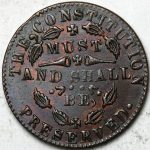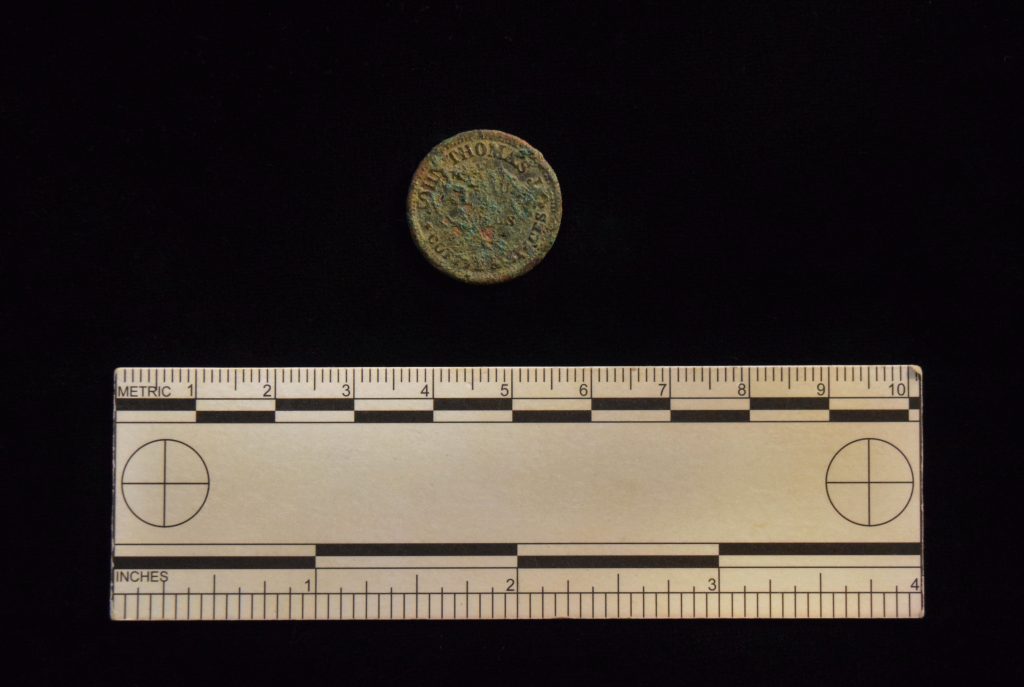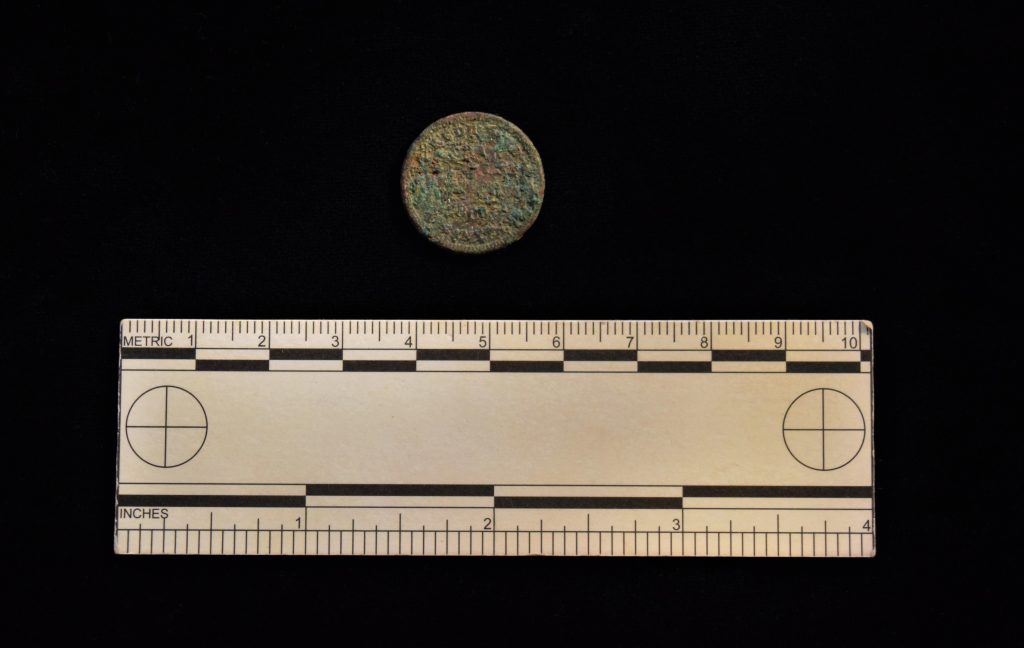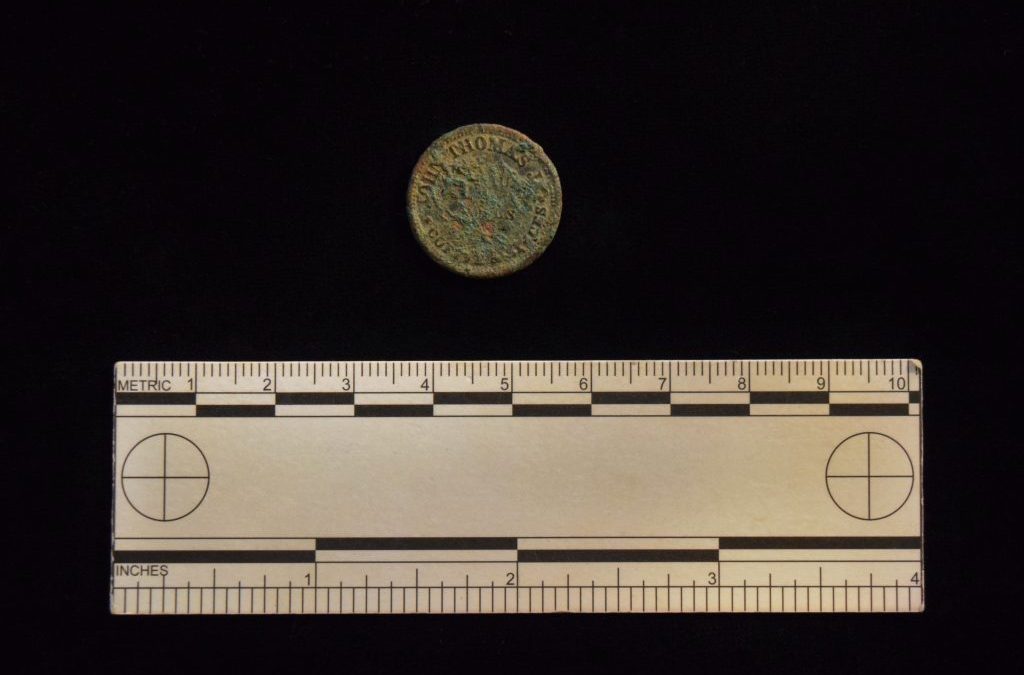By: Katie Rezendes
With war comes shortages ¾ from food and supplies to even physical money. The American Civil War was no exception to this reality. By the second year of the war in 1862, government-issued currency was quickly disappearing as people began to hoard anything made of gold, silver, and copper. This placed many businesses in difficult situations as it hindered their ability to make and complete transactions with their customers. They came up with a simple solution: make their own money. Civil War tokens were primarily of two variations. Store cards were used to advertise a specific company with their name and location minted onto the coin. The other type was patriotic tokens, emblazoned with slogans such as: “The Constitution Must and Shall be Preserved” (American Numismatic Association user_5712 2015).

Privately manufactured store card tokens began appearing in late 1862, starting with H. A. Ratterman in Cincinnati, Ohio. A New York City barkeep named Gustav Lindenmueller was the first to bring store card tokens to New York state by the Spring of 1863, making over one million of his own coins and putting them into circulation. They were quickly accepted as currency as other businesses followed suit, and were most commonly used for streetcar fare. This ultimately came to a head when New York City’s Third Avenue Railroad went to Mr. Lindenmueller to redeem his tokens, but was denied. With no legal backing to them, the company was forced to take the loss. “The railroad had no redress, and it is not improbable that incidents of this character forced the government to put a stop to their issue”(Hetrich & Guttag 2021).

On April 22, 1864, Congress passed the Coinage Act of 1864, which introduced the newly minted two-cent piece and made the privately minted coins ineffectual. By June 8 of that year, Congress made the minting and usage of non-government issued coins punishable by a fine of up to $2,000, a prison term of up to five years, or both. After this, the coins became collector’s items rather than currency (Tebben 2006).


On a recent excavation in May 2022, an example of a store card token was found by Dovetail Cultural Resource Group (Dovetail) at Tudor Place, the 1815 home of Thomas Peter and Martha Parke Custis Peter (granddaughter of Martha Washington and step-granddaughter of George Washington) in Washington, DC (https://tudorplace.org/). The token was identified in Dovetail’s Lab as an 1863 example from John Thomas Jr.’s Coffee and Spices shop in Albany, New York and produced by the Scovill Manufacturing Company of Waterbury, Connecticut. One side featured: “John Thomas Jr. Coffee & Spices Premium Mills”, with the obverse side giving the location of his business: “Redeemed Exchange & Dean St’s 1863 Albany N.Y.”.
Many examples of these tokens exist today, ranging from the fairly plentiful Lindermueller tokens to ones of a more unique and rarer occurrence. Each offers a glimpse into day-to-day life during the Civil War and the effects it had on the general population.
References
American Numismatic Association user_5712
2015 History of Civil War Tokens. Member blog, American Numismatic Association. Electronic blog, https://www.money.org/collector/user_5712/blog/history-of-civil-war-tokens, accessed September 2022.
Forum Username “LostDutchman”
2012 Our Little Monitor Civil War Token Part II. Coin Talk. https://www.cointalk.com/threads/our-little-monitor-civil-war-token-part-ii.219069/, accessed September 2022.
Hetrich, George & Julius Guttag
2021 Civil War Tokens and Tradesman’s Store Cards: a Tentative List of the Civil War Tokens, and Store Cards Issued by the Merchants of the United States. N.p., Legare Street Press, Digital.
Tebben, Gerald
An Overview of Civil War Tokens.
2006 https://web.archive.org/web/20060627014011/https://home.columbus.rr.com/tebben/COLUMBUSCWT/overviewofcwt.html, accessed September 2022.
Wikipedia
2022 Civil War Token. Electronic article, https://en.wikipedia.org/wiki/Civil_War_token, accessed September 2022.

